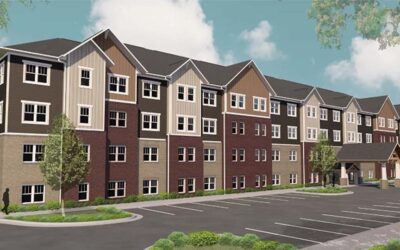Source: Greenville Journal
At the start of last year, Greenville’s Affordable Housing Coalition set a lofty goal — to bring about a thousand new affordable housing units to the area each year for the next decade. The grassroots organization, convened by the Greenville Housing Fund and consisting of dozens of stakeholders including public, private and nonprofit entities, released a community-wide affordable housing strategic work plan, in partnership with Thomas P. Miller and Associates.
“The plan synthesizes the primary causes of Greenville’s exploding affordable housing deficit and identifies the barriers that have prevented our community from making significant inroads,” the Greenville Housing Fund said in a statement.
The findings of that plan can best be boiled down to two numbers:
10,000 — the number of new affordable housing units the county must build by the end of the decade.
3,000 — the number of affordable housing units that must be preserved by the end of the decade.
If Greenville County does not meet both of those two numbers, it cannot hope to make significant inroads in solving the affordable housing problem.
But so far, experts say things are on the right tract, with the Greenville Housing Fund alone projecting 500 to 600 new units in the coming year, according to Rebecca Edwards, community development manager with the City of Greenville.
“I think over the next year you will probably meet that 1,000 goal [for new construction per year],” Edwards said.
Speaking during a special-called meeting of the city’s Planning Commission, Edwards and Community Planner Monique Mattison outlined some of the recent housing projects in the area.
- Affordable housing: housing that does not cost more than 30% of a resident’s income.
- Workforce housing: housing that is affordable for residents earning 80% or less of the area median income (AME).
- Greenville County area median household income: $60,351.
Renaissance Place
A 57-unit senior housing development at 119 Logan Knoll Lane, Renaissance Place features one- and two-bedroom apartments for very low-income and low-income residents, aged 55 and older. The units come with full kitchens, Energy Star-rated appliances, washer/dryers and elevator service, all situated in a building with a leasing office, community gathering area, fitness center, library and on-site laundry facility.
Renaissance Place is just one example of a private developer utilizing federal funds to address affordable housing concerns, Edwards said. By taking advantage of Low Income Housing Tax Credits, a federal incentive that allows tax credits for the purchase, rehabilitation or new construction of rental housing for low-income residents, developers are able to rent units for lower prices while not sacrificing profitability.
That is just one of the many tools local stakeholders are using to ensure developments are affordable.
“And usually it takes several different types to make a development affordable, so the deals can become very complex and have multiple funding sources,” Mattison said.
The sheer number of tools — including community development block grants, 4% bond financing, the S.C Small Rental Development Program, HUD’s Continuum of Care program, traditional financing, community development financial institutions, housing trust funds, federal home loan banks, housing choice vouchers and philanthropy — can be confusing even for developers.
But Edwards said the numerous options are also a boon for Greenville’s housing problem.
“With all of our partners, nonprofit and private, the Greenville Housing Fund and all the incentives, I think over the next year you will see a lot of progress on [providing affordable housing],” Edwards said. “I think there is a lot of work ahead of us, but I think we’re making really good traction too. There are a lot of new partnerships. Private developers are getting more on board with this, which is exciting.”

